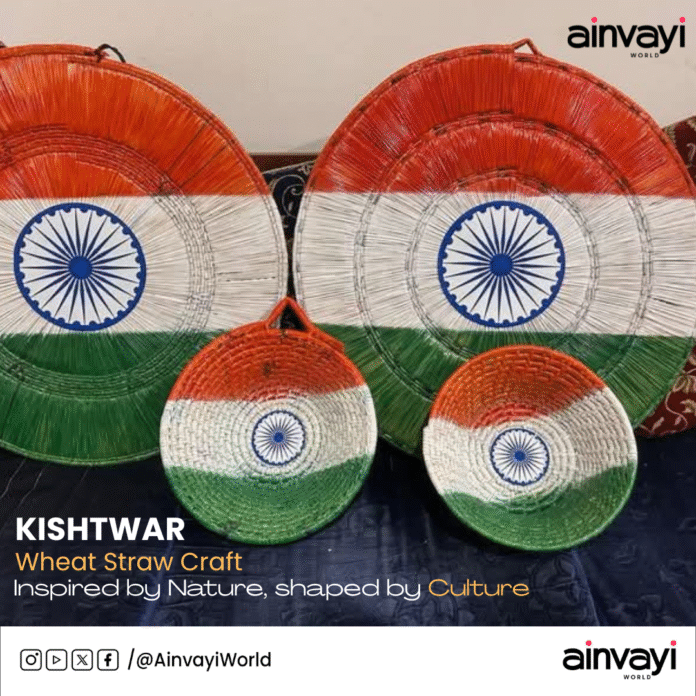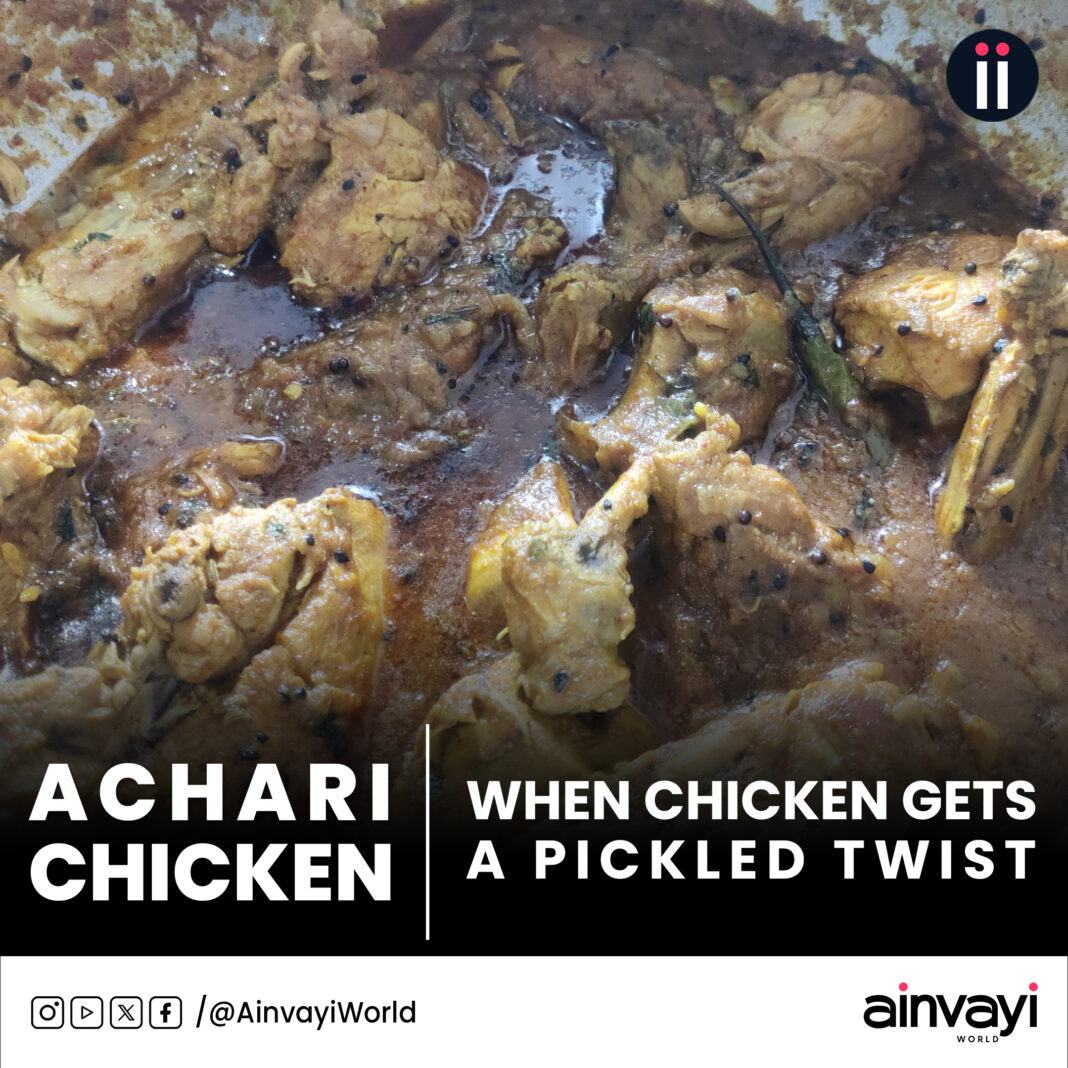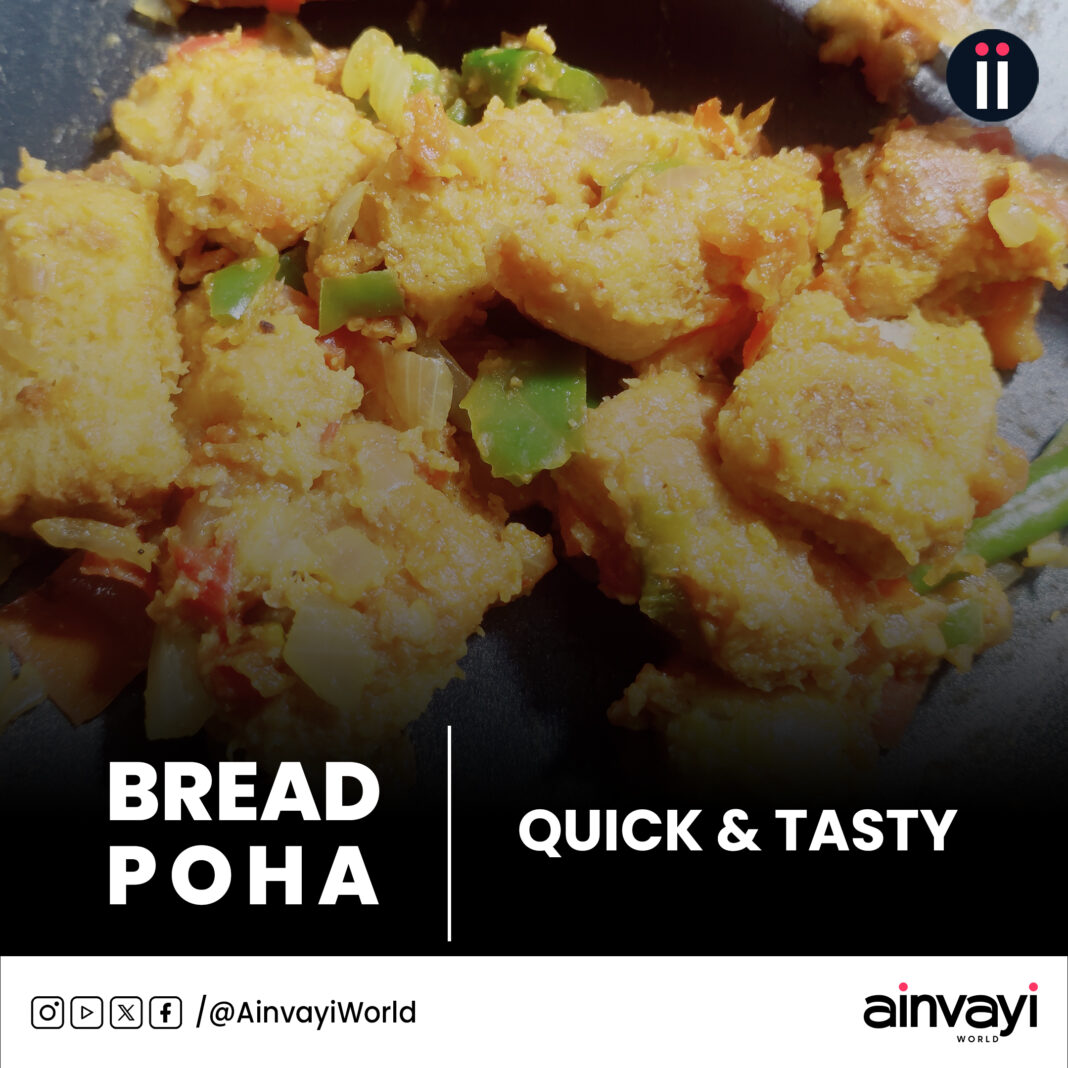This is the story of Kishtwar Wheat Straw Craft.
Cradled in the misty folds of the Greater Himalayas, nourished by the meandering grace of the River Chenab, and infused with the artistic spirit and environmental wisdom of Jammu Division in Jammu and Kashmir, India, this cherished craft turns the humble remains of wheat harvest into golden works of art. Let us unweave it’s story – from roots to the enduring legacy.
Tracing the Legacy
Wheat is found to have been first domesticated in the ancient lands of ‘Fertile Crescent’, from where it gradually spread to the far corners of the world, including the Indus Valley Civilization. Over time, it became deeply embedded in the agro-cultural fabric of the Indian subcontinent, with its grains feeding generations and its symbolism sown into rites, rituals, beliefs, festivals, folk arts, and literary traditions. Numerous sacred Indian texts, too, carry references to wheat, underscoring its prominence and long-standing presence across regions and cultures.
While the exact timeline of wheat cultivation in the magnificently beautiful and expansive Kishtwar—anciently known as Kashtavata—remains unknown, transmigration and trade likely introduced the crop to this region. The erstwhile principality’s fertile soils and rich biodiversity provided the perfect setting for wheat to thrive, undeterred by complex terrain and long winters. Historical accounts, including Tuzk-e-Jahangiri (Jahangirnama), mention the abundant wheat cultivation of then Kishtwar. Folklore mentions indigenous varieties like ‘Kishtwari Gundam’ and ‘Warwani Wheat’, with the former linguistically resembling Godhum in Sanskrit and Godhumai in Tamil, both terms for wheat.
The ingenuity of locals drove them to skillfully harness the wheat straw into items of utility and artistry – warm bedding to fend off the harsh winters, mats for comfortable seating, sturdy footwear, baskets for carrying daily essentials, and intricate decorative pieces. These were essential for daily life, treasured as gifts and trade goods, and even considered symbols of sanctity and prosperity, their appeal transcending the Himalayan folds. Each creation reflects the personal touch of its artisan and embodies the cultural heritage and resourcefulness of the region.
Though the craft’s origins remain elusive, its legacy speaks volumes. The rulers, particularly the Dogra Dynasty, are said to have extended patronage to this craft tradition, helping it flourish and sustain. Today, renewed efforts are breathing new life into the craft, ensuring that it remains a timeless hallmark of Kishtwar’s cultural identity.
The Core of the Craft
At the heart of Kishtwar Wheat Straw Craft lies the seemingly ordinary wheat straw, derived from one of humanity’s oldest cultivated grains – Wheat. Though often discarded after harvest, this byproduct has proven to be a marvel of nature that has sustained generations of artisans in Kishtwar.
Renowned for being fibrous, lightweight, heat-resistant, durable, and flexible, wheat straw is both renewable and abundant, making it an environment-friendly and versatile resource. Beyond its use in handicrafts, it serves as an efficient and cost-effective alternative in diverse industries, including agriculture, gardening, cooking, energy production, insulation, pulp and paper manufacturing, construction, and even bioplastics. In addition to its practical applications, wheat straw boasts impressive health and nutraceutical benefits. Packed with anti-inflammatory, antimicrobial, antioxidant, antithrombotic, antiviral, and cardioprotective properties, it supports immunity and addresses various health concerns, such as sore throat, pyorrhea, skin blemishes, and biliousness.
Following the Green Revolution of the 1960s, wheat emerged as the second-most dominant food crop in India. Today, the country stands as the world’s second-largest producer of wheat, cultivating three major species: Triticum aestivum (bread wheat), Triticum durum (macaroni wheat), and Triticum dicoccum (emmer wheat). This underscores its widespread and continuous availability, and potential and prominence beyond the plate. In Kishtwar too, where agriculture and allied sectors remain the backbone of local livelihoods, wheat holds particular importance as a staple crop. As of 2020–21, nearly 2,056 hectares of land were devoted to wheat cultivation in this region, with traditional farming practices continuing to play a vital role.
The Art of the Craft
The creation of exquisite wheat straw products in Kishtwar is a meticulous process that combines honed craftsmanship, distinct artistic expression, and centuries of wisdom, transforming the unassuming wheat straw into functional and lasting art.
- Harvesting: The process begins with the harvesting of wheat. Following this, the grains are separated from the straw through Threshing. The straw is then carefully peeled to produce smooth fibers, known as ‘Tantil’ in Kishtwar.
- Soaking: The ‘Tantil’ or fibers are soaked in water, which helps soften the straw and remove impurities, making it more pliable and less prone to breakage. This step ensures the fibers are clean and smooth, ready for the process ahead.
- Drying: The artisans gently dry the fibers to prevent excessive moisture. This ensures the fibers remain flexible and workable, without losing their strength.
- Splitting and Flattening: Wheat straw is split into strands to enhance overall tensile strength, elasticity and bonding capabilities.
- Coloring: Some strands are colored depending on the desired product. Natural dyes such as indigo and turmeric, are commonly used to achieve vibrant and sustainable hues.
- Crafting: Once the wheat straw is prepared, artisans begin shaping it into the desired forms using simple tools and a variety of traditional techniques:
- Twining: Twisting two or more wheat straw strands together to create a stronger, more durable cord.
- Coiling: Wrapping wheat straw strands around a core material to form various shapes.
- Plaiting: Intertwining flat wheat straw strands of wheat straw to create detailed and intricate designs.
- Weaving: Arranging the wheat straw strands in a warp and weft pattern to create durable fabrics.
- Finishing: The final step involves several traditional techniques to enhance the durability, texture, and aesthetic appeal of the products:
- Physical Finishing: Artisans hand press the crafted item into the desired shape, followed by buffing to enhance its texture. Natural oils, such as mustard oil, and beeswax are used to nourish the straw and waterproof the product, ensuring its longevity and preserving its inherent beauty and golden hue.
- Decorative Finishing: To add an artistic touch, the artisans adorn the products with decorative elements such as fabrics, mirrors, beads, and natural colors. Intricate embroidery with colored threads or polythene is also used to elevate the visual appeal of the final piece.
The result is a product with a smooth and lustrous finish, that stands apart for its exceptional qualities and golden glow, all thanks to the wheat varieties unique to Kishtwar. Each piece weaves tradition with innovation, and beauty with utility.
Diverse Product Range
The artisans of Kishtwar have long showcased their skills through traditional wheat straw products, which were often offered to deities by locals as part of prayers for a bountiful harvest or in gratitude for one. Over the years, infusion of the ever-evolving innovation and preferences has enabled them to cater to both practical and decorative needs:
- Mats: The round and oblong mats, locally referred to as ‘Chaklas‘ or ‘Binnas‘ have gained an iconic status. These mats, commonly used in the local households of Hindus, Buddhists and Muslims, for sitting, meditating, worshipping and performing religious practices, are regarded as symbols of sanctity, prosperity and heritage. It is said that these mats caught the attention of royalty, who commissioned them for use in palaces, further enhancing their prestige. Today, artisans continue to honor this tradition while elevating it with different shapes and sizes, vibrant designs, intricate patterns, and rich colors.
- Baskets: Traditionally, these fine baskets or ‘Tokris‘ have held a special place in the region’s spiritual and religious practices, being used to carry sacred offerings, besides carrying daily essentials. Today, artisans have expanded the range of baskets with diverse shapes, sizes, patterns, and colors, showcasing their skill in combining functionality, modern taste, and artistic flair.
- Slippers: Wheat Straw Slippers or ‘Juttis/Chappals‘ were once worn aplenty in the region, cherished for their comfort, insulation, and health benefits. They have been particularly worn in kitchens and places of worship. Believed to absorb and purify negative energies, they are worn by local Hindus, especially during death rites, to safeguard the soul of the deceased and those present. Today, artisans continue to craft these slippers, maintaining traditional craftsmanship while adapting to modern preferences. They remain a culturally significant choice.
- Home and Office Essentials: Wheat Straw is increasingly being used to create functional and aesthetic items that bring natural and rustic charm to both living and work spaces. Some of the popular items include rugs, trays, coasters, placemats, pen-stands, boxes, footstools, moodas, hand-fans, and blinds.
- Decorative Items: Exploring new avenues, artisans have been crafting items for decor, such as wheat straw paintings, wall hangings, bouquets, nameplates, vases, toys, lamp shades, frames, sculptures, and jewelry, that offer unique character and elegance to any space.
This dynamic product range demonstrates the adaptability and resilience of Kishtwar Wheat Straw Craft. By blending modern needs and techniques with time-honored methods, artisans ensure the craft remains relevant, sustainable, eco-friendly, and health-conscious creation, while preserving its cultural significance.
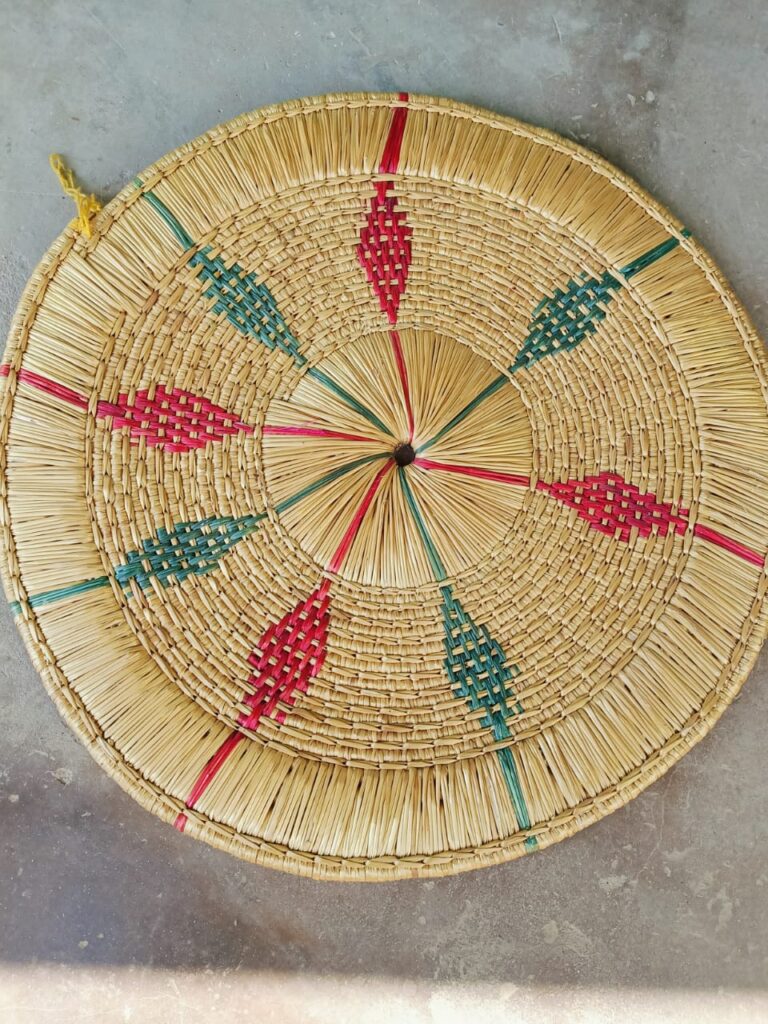
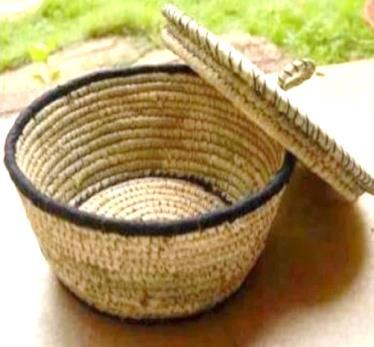
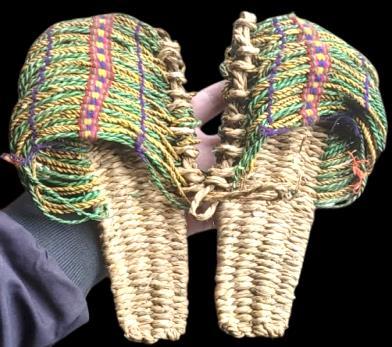
Government Initiatives
The Department of Handicrafts, Kishtwar, under the aegis of Directorate of Handicrafts and Handloom, Jammu and District Administration, Kishtwar, has taken several meaningful steps to nurture and promote Kishtwar Wheat Straw Craft. These efforts are supported through various schemes, such as Training program, Credit Card scheme, Scholarships, Financial Support Scheme, PM Vishwakarma Scheme, Karkhandar Scheme, and the PMEGP. Together, these aim to provide artisans with financial aid, skill development opportunities, and marketing support to enhance their craft and reach broader markets.
As many as 220 local artisans engaged in Kishtwar Wheat Straw Craft are registered with the Department of Handicrafts, Kishtwar. In addition, 11 local Handicrafts Industrial Cooperative Societies, comprising a total of 121 members, are also registered with the Department and are availing benefits under the Financial Support Scheme. A dedicated training center in Gulabgarh, Kishtwar, is actively imparting skills to 20 trainees, helping promote this craft among the younger generation. The Department has also established two Karkhandar units—one at Akerhang, Kishtwar, which has been successfully completed and transformed into a cooperative society, and another at Passerkoot, Kishtwar, which has also been completed, with its transition into a cooperative society currently underway. A proposal for the development of a Craft Cluster is also under process to further strengthen and scale the wheat straw craft ecosystem in the region.
Furthermore, a proposal to establish an Off-Farm Producer Organization (OFPO) for Kishtwar Wheat Straw Craft has been submitted to District Development Manager, National Bank for Agriculture and Rural Development (DDM, NABARD), for sanction. The Artisan Service Centre, Udhampur, Jammu and Kashmir, under the aegis of Development Commissioner (Handicrafts), Ministry of Textiles, Government of India, recently conducted an awareness programme in Kishtwar to help the artisan community understand and avail benefits of various schemes sponsored by both the Union Territory and Central governments. In the coming days, the Centre will be organising a two-month workshop on skill upgradation and product diversification for 30 trainees in Kishtwar, further supporting the craft’s sustainability and growth.
The preservation and promotion of Kishtwar Wheat Straw Craft cannot be viewed in isolation from the agricultural ecosystem of the region. The Central and State Variety Release Committees (CVRC and SVRC) have, over the years, introduced improved wheat varieties in the region, aiming to enhance productivity while aligning with changing dietary preferences. While these newer varieties have been tailored for consumption, they often lack the characteristics found in traditional varieties – which lend the Kishtwar Wheat Straw Craft its defining qualities. At the same time, shifts in farming tools and techniques have also impacted the characteristics of wheat straw essential to the craft. Recognising these aspects, both government institutions and farming/art practitioners must work in tandem to ensure that evolving agricultural practices continue to support, not sideline, the craft.
The Golden Legacy
Rooted in native wheat varieties, Kishtwar Wheat Straw Craft is shaped by this region’s natural abundance, cultural vibrance, artistic lineage and a timeless wisdom of living in harmony with the land. What was born in the remote beauty of Kishtwar, embodying the simplicity, soul of life, and quiet resilience of the highlands, shines today as a precious cultural heritage, a wellness powerhouse, and a vital socio-economic asset.
Kind to the hands that weave it, the Earth that yields it, and the lives it serves – this Himalayan craft offers a visionary path in an era increasingly defined by climate change and the pressing call for sustainability. It tells of a truth we often forget, that the most unassuming materials, even those cast aside, can hold within them the potential for grace, purpose, and healing, all while telling the story of a place and its people.

